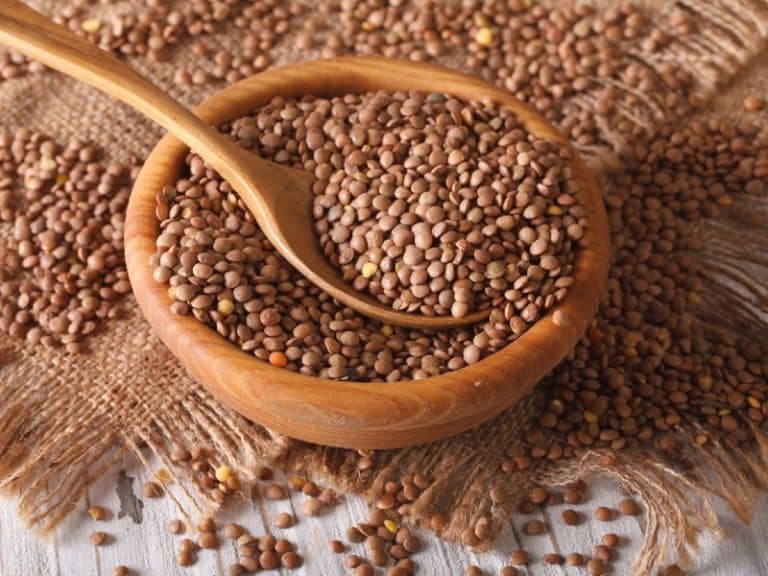What Is the Best Mirin Substitute?
One of the world’s leading authorities on food trends, Whole Foods, released its predictions for 2017 food trends. The list was made by experts who track consumer behavior at more than 400 of the chain’s stores.
And guess what’s predicted to be all the rage this year? Mirin or other Mirin substitute.
What is mirin?

To put it simply: it is rice wine, a primary ingredient of Japanese cuisine. Some use sweet rice wine as mirin can be made using different types and have different varieties.
Obviously, since Mirin is a relatively new thing in our kitchens, you can’t always have it within your reach when you find a recipe that requires a couple of spoons of it.
If you just prepare the dish without Mirin, it will not have the right flavor. So, what can you do then? You can try to find an adequate replacement that would not diminish the taste of the recipe.
However, before we engage in the search for the best mirin substitute, we should first understand what mirin is and how it contributes to the recipe’s flavor and texture.
Read Article: What Is Soluble Corn Fiber? Is It Good For You?
The History behind This Japanese Ingredient

Some ingredients are so deeply rooted in the history of a culture that it would be disrespectful to use them without knowing the story behind them, and Mirin is certainly one of those ingredients. It goes all the way back to medieval Japan when it was a popular drink for women.
During the Edo period (between 1603 and 1868) Nipponese cooks found mirin to be an excellent source of sweetness and used it in many of their recipes.
With the revolutionary Meiji Restoration, Mirin as a drink became out of vogue, just as the samurai, but it still remained present as a flavoring agent.
How Is Mirin Brewed?

Mirin is introducing Sochu (a vodka-like spirit) to the vat halfway through a quasi-sake brewing process. The Sochu kills all the fermenting Koji (fungus) which would otherwise metabolize all the sugars.
This is similar to the procedure where Brandy is added to half-fermented wine to produce Port.
Although Mirin and Sake are made from different types of rice, the similar initial brewing process lends to Mirin some of the tastes of Sake but that is where their similarities end. The alcohol content in Mirin is low (between 12 and 14%).
After adding Sochu, Mirin is left to mature, to get its distinctive sweet taste and golden color.
Different Varieties of Mirin

The various types of Mirin are actually three distinct levels of quality: quality Mirin, mediocre Mirin and Shin-Mirin. Quality Mirin is produced without artificial preservatives or additives.
It is made in a traditional way and sold in a glass bottle, and contains about 14% of alcohol. Mediocre Mirin is a synthetic beverage that contains a lot of other stuff besides rice or sweet rice, including corn and glucose syrup.
Finally, Shin-Mirin, which translates to new Mirin is sauce that tastes almost like Mirin and contains little to no alcohol (less than 1%).
Below is a short video discussing about all types of Mirin you can use:
It is one of the most used ingredients in traditional and modern Japanese cooking.
Regional Uses of Mirin

The use of Mirin in Japanese cuisine depends on the region (prefecture) of the country.
In Kanto, it is most commonly used untreated or as a raw additive to a meal, while in Kansai, it is always briefly boiled before usage, to allow evaporation of the alcohol and enhance the rich sugary taste.
In general, Mirin is usually combined with salty sauces or in combination with simmered and stewed dishes, to provide them with contrast sufficient to enhance the flavor without overwhelming it.
It goes very well when mixed with soy sauce. The famous teriyaki sauce is made of Mirin, sugar and soy sauce.
The Function of Mirin in Cooking

You have probably already figured out by now that rice wine has a sweet flavor which lends a similar amount of sweetness to the dish you’re preparing.
It is ideal for toning down odors and strong flavors, particularly those of fish. By doing that, it brings out the other flavors of the other ingredients. Mirin adds brilliant glaze to sauces and unusual depth of flavor.
It can also affect the texture of a dish, especially fish, if added too early in the cooking process, causing it to trim up, so it is always better to add it in later stages if you want to retain the delicate soft texture of foods.
Cooking Methods and Suggested Uses

Mirin can be utilized in both Western and Oriental cooking styles. Here are some methods and uses to try:
- Sautéeing and Stir-Frying: Mirin adds depth of flavor to sautéed and stir-fried vegetable, fish, and noodle dishes. It is added to the dish near the end of cooking. This helps enhance and round out the flavors.
- Simmering: Mirin is used to add flavor to many simmered and poached dishes including reconstituted dried tofu, and deep-fried tofu, various cheeses, such as Fontina and its substitutes, fish and shiitake mushrooms.
- In Desserts: It is added to fruit cakes, poached pears, tea cakes, and glazes.
- In Dips: Dips deep-fried foods, such as mochi, often include mirin.
- As a Liqueur: Authentic mirin is a delicious beverage.
- In Marinades: Mirin marinade is best used soft foods like tofu, but it can occasionally be added in small amounts to fresh fish.
- In Noodle Broths: Mirin lends a characteristic flavor to noodle broths and dips.
- In Sauces and Gravies: It provides with a rich glazed texture.
- In Sushi: Mirin can be used to season sushi rice.
The Best Mirin Alternative

Finally, we’re moving on to finding the right replacement for Mirin. Although a unique drink, Mirin can be described as a combination of acidic and sweet flavors, and that is exactly what you need to achieve with your substitute. Here is one simple recipe that follows that logic:
- 1 or 2 tbsp sugar
- ½ cup white wine, vermouth or dry cherry
Mix, until you get a smooth texture.
You can also try with another rice wine – sake. Mix two parts heated sake with one part sugar, and you will get a taste which is quite similar to Mirin.
Rice Wine vinegar VS Mirin
If you would prefer using a non-alcoholic substitute, you can use vinegar. Rice wine vinegar has a similar taste as Mirin, but any white wine vinegar will work. Use one tablespoon vinegar and a 1/2 teaspoon of sugar for every one tablespoon of Mirin in the recipe.
The type of vinegar you will use will affect your final product. For example, the vinegar flavor might be more present with distilled vinegar, while it might be more subtle if you use white wine or rice wine vinegar.
Can You Make Your Own Mirin?

The best way of replacing store- bought Mirin, is by making your own homemade Mirin. Although it won’t exactly be as the one brewed in Japan, it will be good enough for most of the meals, and even occasional sips. Here is how to make about ½ cup of Mirin:
Ingredients:
- ½ cup sake
- 5 tbsp sugar
- 1 ½ tsp pure cane syrup
Method:
- Combine the ingredients in a small saucepan.
- Bring to a boil over medium heat.
- Stir frequently.
- Remove from the heat and set aside to cool.
If you are using cane syrup in a can for this recipe, make sure you have a good can opener – no matter how great it is, homemade Mirin isn’t worth hurting yourself. As for the sugar, it would be best to use organic cane sugar.

Mirin is the secret ingredient missing from our Miso soup that makes the traditional Japanese dish taste so rich, unique, deep and complex.
Since it is not very common in our stores (at least the traditional one, of the best quality), you have to make do with what you have and find Mirin substitute that will enrich your recipes with similar flavors. Or you can make your own Mirin.
What do you say, are you willing to give it a shot?






